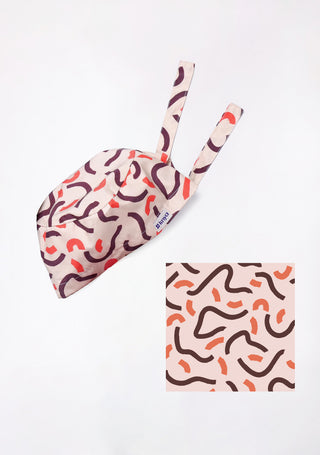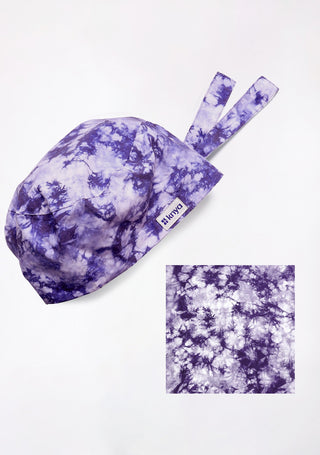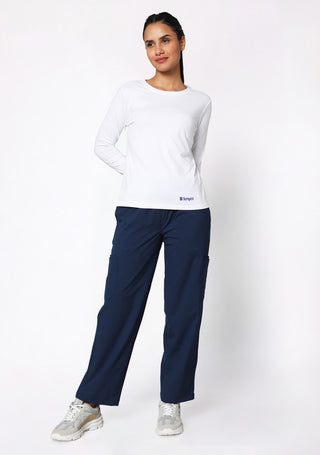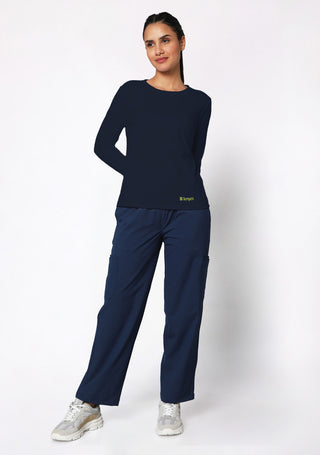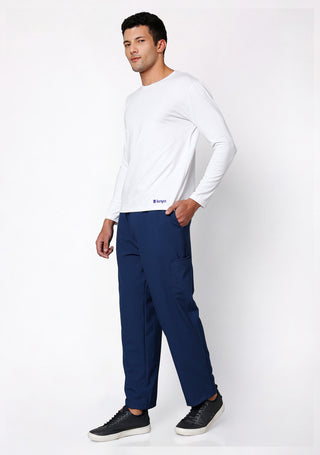In the healthcare sector, the color and style of attire are more than just a matter of convenience or fashion. Blue scrubs, in particular, have become a staple in hospitals, clinics, and other medical facilities worldwide. These uniforms serve multiple purposes beyond their basic function of providing comfort and ease of movement for healthcare workers. From a psychological and hygienic perspective to their historical context, blue scrubs hold a significant place in healthcare settings.
The Psychological Impact of Color
Color plays a critical role in human psychology, influencing mood, behavior, and even productivity. The color blue has long been associated with calmness, trustworthiness, and professionalism. For healthcare workers, the color of their scrubs can impact their own mindset as well as how they are perceived by patients.
- Blue is known to have a calming effect on individuals, and this is particularly important in healthcare settings, where patients may be anxious or stressed.
- The sight of blue scrubs can help create a more soothing environment, as the color is often linked to tranquility and relaxation. When patients enter a hospital or clinic, they may feel a sense of reassurance simply from seeing healthcare professionals dressed in blue scrubs.
- This effect is especially important in settings like pediatric wards, where young patients are often nervous about their treatment.
Browse best Scrubs Collection
Blue Scrubs and Infection Control
One of the most practical aspects of wearing blue scrubs is their role in infection control. Hospitals and clinics are high-risk environments where exposure to infectious agents is a constant concern. Scrubs are designed to minimize the risk of cross-contamination by providing a barrier between the healthcare worker and the patient.
- Blue scrubs, like those of other colors, are made from fabrics that are easy to clean and disinfect, which is essential in maintaining hygiene standards.
- The color blue is often chosen because it can effectively mask stains and spills, which are common in medical environments.
- Blood, bodily fluids, and other substances can be easily wiped off blue fabrics, ensuring that healthcare workers remain presentable and hygienic throughout their shift.
- Additionally, blue scrubs help healthcare facilities easily distinguish medical staff from patients. In the fast-paced environment of a hospital, having a distinct and uniform look for medical professionals ensures that patients and visitors can quickly identify individuals who can assist them.
The Role of Scrubs in Professionalism
Scrubs, particularly blue scrubs, are more than just a practical choice for healthcare workers; they also serve as a symbol of professionalism. Wearing a uniform helps create a sense of equality and unity among medical staff, as it removes any visual distinctions between healthcare professionals based on their background or personal style. This is particularly important in a hospital setting, where teamwork is essential to providing quality care.
Blue scrubs promote a sense of order and cohesion within medical teams, allowing workers to focus on their tasks rather than worrying about their attire. In addition, scrubs serve as a reminder that healthcare workers are part of a highly specialized field. The uniform is a constant reminder of the responsibility and care that healthcare professionals must uphold.
Shop the Best Lab Coats from Here!
Blue Scrubs and Comfort
In addition to the psychological and professional benefits, blue scrubs are designed for maximum comfort and practicality. Healthcare workers often work long hours, and their uniforms must support their ability to move freely and efficiently. Scrubs are designed to provide comfort and flexibility, allowing workers to perform tasks such as lifting, bending, and reaching without restriction.
The lightweight, breathable fabric of scrubs helps regulate body temperature, ensuring that healthcare workers remain comfortable during shifts that can span several hours. Furthermore, scrubs typically feature multiple pockets, allowing workers to carry essential tools and equipment such as pens, notepads, and stethoscopes without needing to carry additional bags.
Variations and Trends in Scrubs
While blue scrubs remain the standard in most healthcare settings, there are various shades of blue, from navy and royal blue to lighter pastel blues. Each shade carries its own psychological and aesthetic significance. For example, darker blue shades are often associated with professionalism and authority, while lighter blues can create a more relaxed and welcoming atmosphere.
In recent years, healthcare facilities have also begun to embrace other colors of scrubs, such as green, teal, and purple. However, blue remains the most popular choice, especially in hospitals and surgical environments.
In addition to color, there has been an increasing trend in the customization of scrubs. Healthcare workers are now able to personalize their uniforms with embroidery, such as their names or job titles, further reinforcing the sense of professionalism and identity. Scrubs with fun patterns or designs are also becoming more popular in pediatric or outpatient settings, where the aim is to make the environment feel more friendly and less intimidating for patients.
Blue Scrubs in Popular Culture
The prevalence of blue scrubs in healthcare settings has also made them a significant symbol in popular culture. Television shows and movies often depict medical professionals wearing scrubs, and blue has become the color most commonly associated with healthcare workers. This visual representation has further solidified the connection between the color blue and the medical profession in the public's mind.
The portrayal of healthcare workers in blue scrubs, particularly in high-stress, high-stakes environments like emergency rooms or operating rooms, has contributed to the widespread recognition of the role that medical professionals play in society. In many ways, blue scrubs have become a universal symbol of healthcare and the selflessness of those who work in the medical field.


